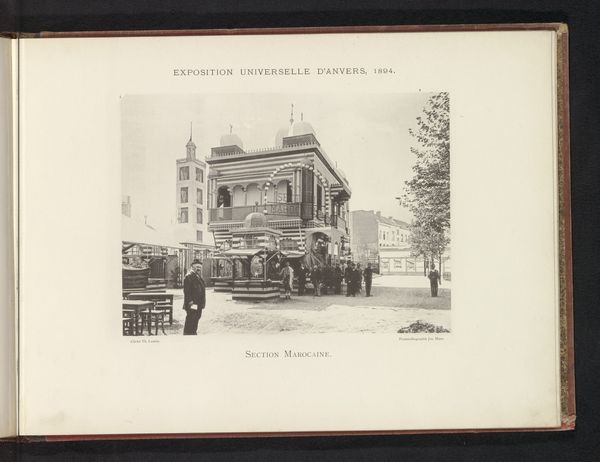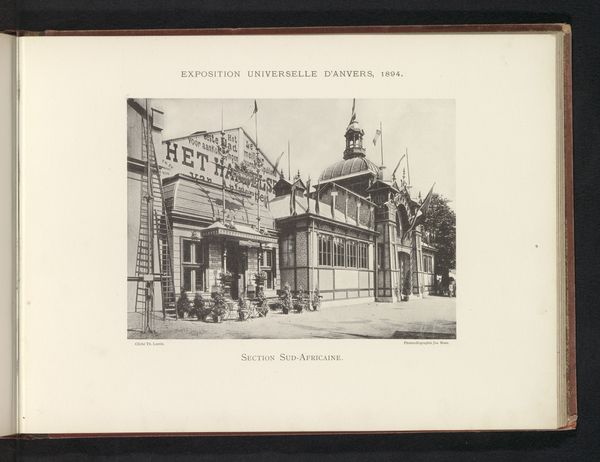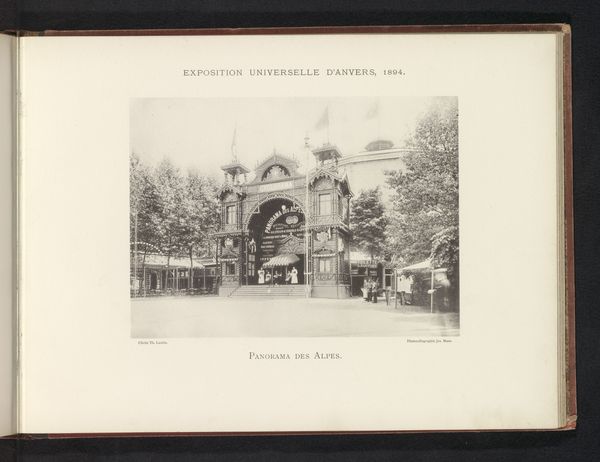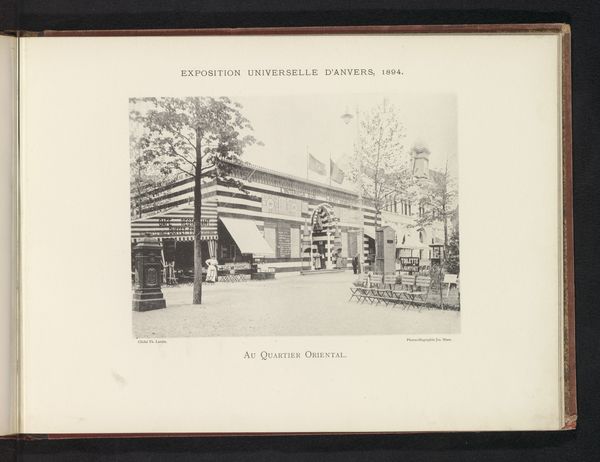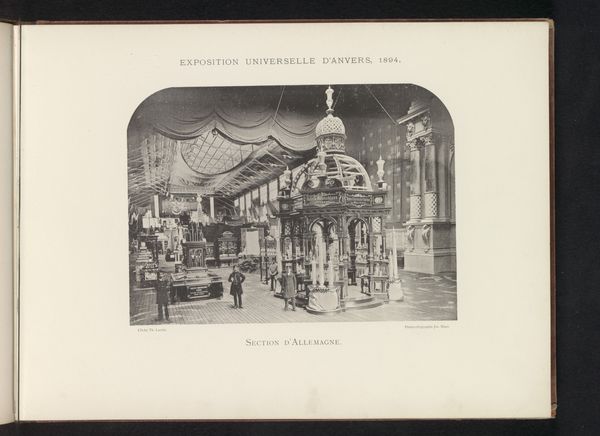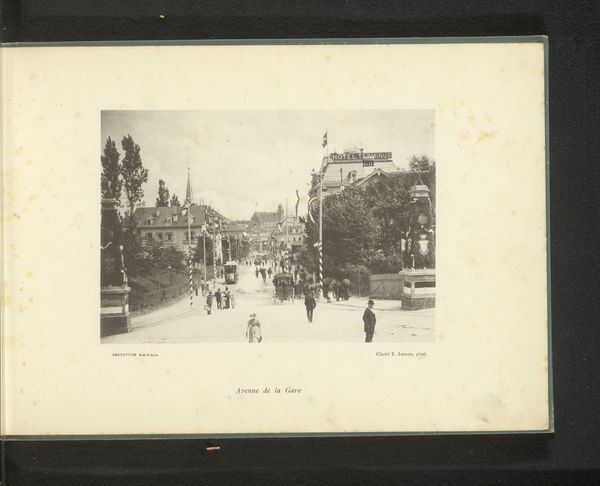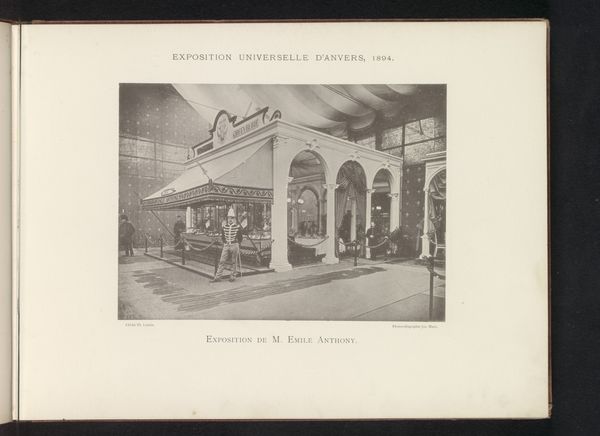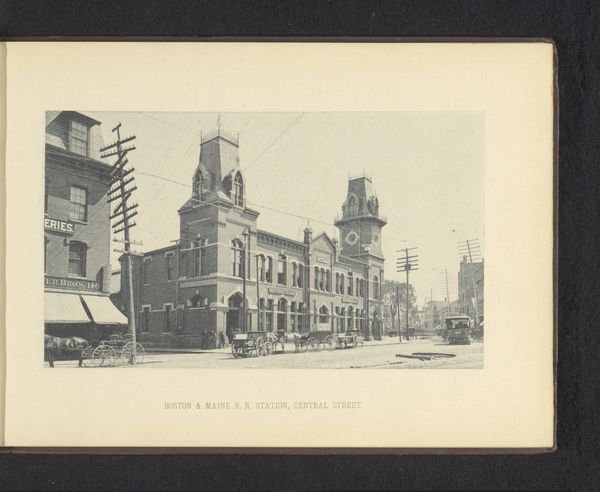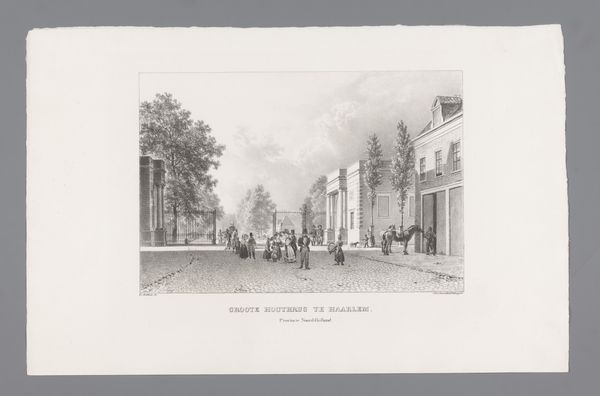
print, photography
#
pictorialism
# print
#
photography
#
cityscape
#
building
Dimensions: height 155 mm, width 220 mm
Copyright: Rijks Museum: Open Domain
Editor: This is a print of a photograph by Th. Lantin called "Exterieur van de Oriëntaalse sectie van de wereldtentoonstelling te Antwerpen," taken in 1894. It depicts a cityscape with buildings in what looks like an "Oriental" style. The print itself feels very staged, almost like a movie set. What's your take on this image? Curator: Indeed, it's quite striking how this image embodies the cultural dynamics of world expositions. It reveals more about European fantasies of the Orient than about the actual cultures being represented. How do you think the architecture in this photograph contributes to the "Oriental" theme? Editor: The buildings have these dome-like roofs and decorative facades which, to my eye, suggests a kind of generic "Eastern" aesthetic, distinct from Western architectural styles I am more familiar with. Do you see this as a respectful portrayal, or is something else at play? Curator: That’s a crucial question. In the context of the late 19th century, these exhibitions were often instruments of colonial power. The "Oriental section," presented a curated, often distorted, view of the East to a Western audience. It reinforced the idea of Western superiority by framing other cultures as exotic spectacles. Consider the photographer's choice of framing - what does it include, and what does it omit? Editor: Now that you point it out, it feels like it is reinforcing a specific viewpoint. I hadn't thought about the power dynamics involved in these representations. Curator: Exactly. It's important to remember that even seemingly neutral photographs like this were often laden with ideological baggage. They shaped public perceptions and helped justify imperial ambitions. Editor: I see now how this photograph is more than just a cityscape; it's a historical artifact reflecting complex social and political forces. It gives me a lot to think about when considering how images can be used to convey and reinforce certain ideologies. Curator: Precisely. Analyzing this image through its historical context helps us understand the role of art and photography in shaping public opinion and furthering specific agendas.
Comments
No comments
Be the first to comment and join the conversation on the ultimate creative platform.
